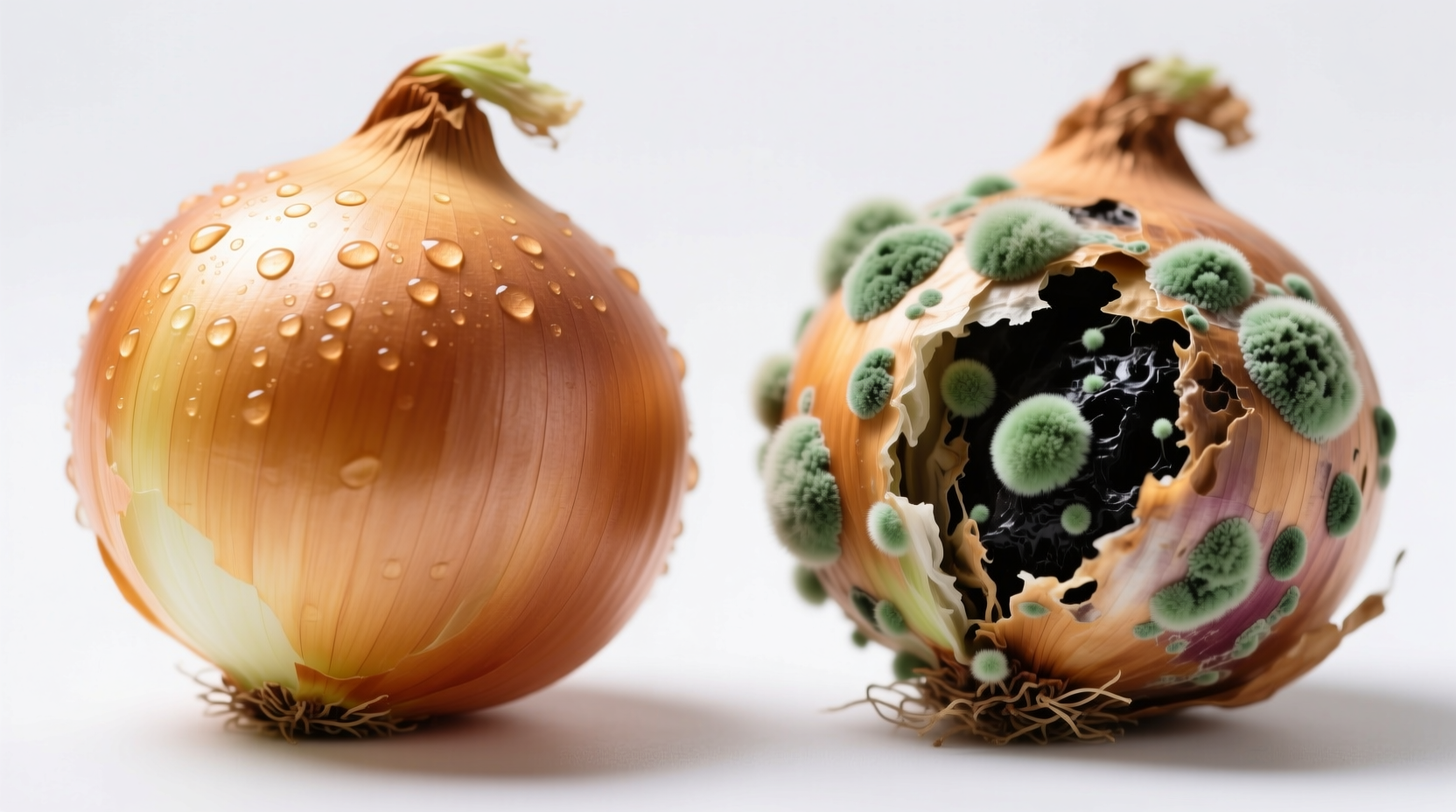Discovering spoiled produce can ruin meal plans and waste money. Knowing exactly how to identify a bad onion helps prevent foodborne illness while reducing kitchen waste. This guide provides clear, science-backed indicators to help you confidently determine onion freshness every time.
Visual Inspection: What to Look For
Start your assessment with a thorough visual examination. Fresh onions should have firm, dry outer skins with consistent color. Here's what indicates potential spoilage:
- Mold growth - Any fuzzy white, green, or black spots indicate fungal growth
- Discoloration - Dark brown or black patches beyond the normal outer layer
- Wet spots - Shiny, damp areas that feel sticky to the touch
- Excessive sprouting - Long green shoots emerging from the center
According to the USDA Food Safety and Inspection Service, mold on firm produce like onions can sometimes be trimmed away if the affected area is small. However, if mold appears in multiple spots, the entire onion should be discarded as roots may have penetrated deep inside.
| Characteristic | Good Onion | Bad Onion |
|---|---|---|
| Outer Skin | Dry, papery, intact | Wet, slimy, or moldy |
| Texture | Firm throughout | Soft spots or mushy areas |
| Color | Consistent for variety | Dark patches or unusual hues |
| Smell | Mild, characteristic odor | Strong, unpleasant, or sour smell |
Texture Assessment: The Touch Test
Gently squeeze the onion to assess its firmness. A fresh onion maintains consistent firmness across its entire surface. Press lightly with your fingers:
- Healthy onions feel solid with no give
- Spoiled onions develop soft spots that yield to pressure
- Advanced spoilage creates completely mushy texture
Food scientists at Cornell University's Food Safety Lab note that onions begin losing structural integrity when internal moisture levels change. As spoilage progresses, cellular breakdown creates those telltale soft spots. If more than 25% of the onion feels soft, discard the entire bulb even if other areas appear fine.
Smell Test: Your Natural Warning System
Bring the onion close to your nose for a quick sniff test. Fresh onions have a characteristic sharp but clean aroma. Warning signs include:
- Vinegar-like sourness indicating fermentation
- Musty or earthy odors suggesting mold growth
- Completely absent smell (may indicate advanced spoilage)
Unlike some produce where smell alone isn't reliable, onions develop distinct off-odors when spoiled. The National Center for Home Food Preservation confirms that unpleasant odors in onions typically indicate bacterial growth that makes them unsafe to consume.
When Is an Onion Still Safe to Use?
Not all imperfections mean immediate disposal. Understanding the difference between normal aging and actual spoilage prevents unnecessary waste:
- Dry outer layers - Peeling away papery skin is normal
- Minor sprouting - Short green shoots can be cut away
- Surface mold - Small isolated spots may be trimmed with 1-inch margin
The FDA Food Code specifies that firm produce with surface mold can sometimes be salvaged by removing the affected area plus one inch around it. However, if mold appears on multiple sides or the onion feels soft beneath the surface, discard it entirely. Onions' layered structure allows contaminants to spread between layers invisibly.
Proper Storage to Maximize Freshness
Understanding how to store onions properly prevents premature spoilage. Follow these evidence-based storage guidelines:
- Store in cool, dark, well-ventilated area (not the refrigerator)
- Keep away from potatoes which emit moisture-accelerating gases
- Never store in plastic bags which trap moisture
- Use mesh bags or baskets for optimal air circulation
Research from the University of California's Postharvest Technology Center shows that proper storage extends onion shelf life by 30-50%. Onions stored at 55-60°F with 65-70% humidity maintain quality significantly longer than those kept in warmer, more humid environments.

Common Questions About Onion Freshness
Many home cooks struggle with determining onion quality. These frequently asked questions address the most common concerns:











 浙公网安备
33010002000092号
浙公网安备
33010002000092号 浙B2-20120091-4
浙B2-20120091-4